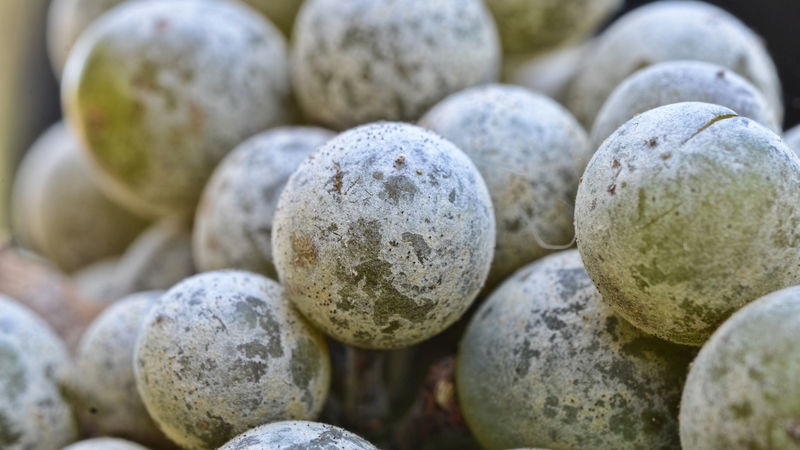Citrus Growers in the Weeds
Many years ago, citrus growers mechanically controlled weeds using hand hoeing, mechanical tree hoes, or other under-canopy cultivation implements to eliminate weed growth. However, in today’s citrus-production systems, these methods are no longer economically feasible due to the high cost of labor or for potential damage to low-volume irrigation systems. Today, a citrus grower must use a variety of different herbicides to provide control of a broad range of different weed species in an economically and environmentally sound manner.
A weed is defined as any plant growing where it is not wanted. Weeds not only compete with citrus trees for nutrients, moisture, light, and space, but also harbor insects and rodents that attack citrus trees. Weeds also might affect harvesting operations, water distribution patterns from irrigation system emitters, disease control, and environmental conditions within the grove.
Size Matters
The growth developmental stages of weeds can be divided into four basic groups: seedling, vegetative, seed production, and maturity. Each of the groups has different characteristics that aid in determining weed type, species, or its potential impact to the citrus tree.
Seedlings are small, very young, delicate plantlets. Close examination of the seedling stage will allow you to determine if the plant is a grass or broadleaf species by looking at the number of leaves or their pattern when they emerge from seed.
The vegetative stage occurs when plants are rapidly growing and begin to produce stems, roots, and foliage. The third stage is when the plant begins to produce seeds and most of the energy is directed to that process. When the plant reaches full maturity, there is little or no further growth within the plant and the movement of water and nutrients is greatly reduced.
At each of the four growth stages, the weed will have different growth characteristics that impact its potential for control by selected herbicides or herbicide combinations. In general, when weeds are in the seedling stage, they are the easiest to control and become more difficult to control as they advance to each successive stage. When the plant is fully mature, it is the most difficult to control, as water movement is reduced compared to other more vulnerable growth stages. Reduced water movement into and within plant tissue will limit the uptake and movement of herbicides within the plant.
Life Cycles
Plants can be classified by their life cycle as well. Annuals have a one-year life cycle. They will grow from seed, mature, and produce seeds for the next generation in 12 months or less. Examples of annuals are crabgrass, goosegrass, pigweed, and morningglory. Within the annual classification, they can be further divided into winter and summer annuals. Winter annuals will grow from seeds that sprout in the fall, mature, produce seeds, and then die before summer. Summer annuals grow from seed that sprout in the spring, mature, produce seeds, and then die in the fall.
Plants with a two-year life cycle are called biennials. During the first year, they sprout from seed and develop an extensive root system and compact cluster of leaves. In the second year, they mature, produce seeds, and die. Examples of biennials are bull thistle and wild carrot.
Plants that are perennials normally live more than two years. Some perennials mature and reproduce in the first year and then repeat the growth cycle, seed production, and maturity stage for another year or more. Examples of perennials include Johnsongrass and purple nutsedge.
Identification Information
Weeds growing on land can be classified as either as a grass, sedge, or broadleaf weed. When grasses emerge from seed, they have only one leaf. Grass leaves are generally narrow, upright, and contain parallel veins. The stems are generally round and can be solid or hollow in cross section. Grass seedlings have a fibrous root system with the growing point being sheathed and located below the soil surface. Grasses can be annuals or perennials.
Sedge is very similar to a grass, but not truly a grass. Sedges have triangular stems and their leaves are arranged in groups of threes. Herbicide products for the control of many grasses may not control sedges. Thus, one must properly identify the weed before selection of an herbicide product. Sedges are perennial weeds that produce rhizomes and tubers. Common examples of sedges are purple and yellow nutsedge, commonly called nut grass.
Broadleaf weeds will have two leaves as they emerge from seed. Leaves of broadleaf weeds are broad (rather than narrow) with netlike veins. The root system is fairly coarse and has a strong central taproot. Broadleaf plants can be annual, biennial, or perennial. To properly identify the plant, you need to closely look at the leaf shape, size, and if the leaves are opposite or alternate in arrangement on the stem.
Controlling Weeds
When selecting an herbicide product for the control of a specific weed, you will need to determine the type of weed you are trying to control (grass, sedge, or broadleaf) as well as its stage of growth (seedling, vegetative, seed production, and maturity) to select the proper herbicide product and application rate. Product labels will provide information on weeds controlled as well as the rate that is necessary for control of selected weeds and stages of growth.
When using any herbicide product, please remember to carefully read the label and follow each applicable section of the directions. Remember, the label is the law.
Information for this article was sourced from Agricultural Tree Crop Pest Control, SM 63, Fred Fishel, University of Florida.









